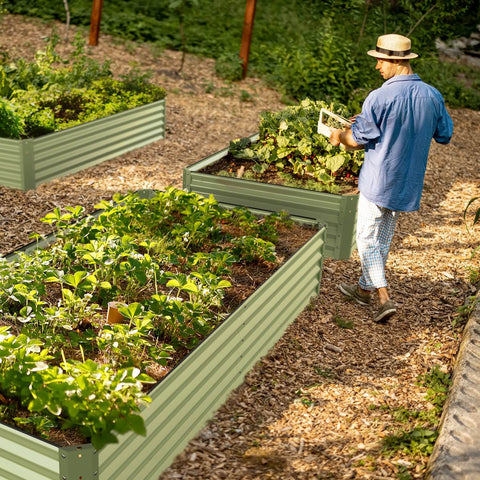Perennial plants can become the gardener's best friend, their faithful reproduction and reliable flowering year after year. As the threat of frost recedes, most perennial plants will reappear and then blossom at some time between the middle and late spring and autumn. In this article, Savana will provide one list and let you know how to plan.

You can plan perennial flowers for all seasons in various ways. As other perennial flowers are sown and closed, new plants will bloom. Moreover, if you are looking for plants that will not bloom soon and will disappear for a year, then many perennial plants are suitable for plants that want to bloom longer.
Target continuous colors
The flowering peak time of most perennial plants before sowing is about two to three weeks. The trick is to plant the right combination so that you can always blossom and bear fruit. The flower season usually begins with tulips, daffodils and other spring bulbs planted in autumn.
You can obtain perennial plants suitable for all seasons in the following ways:
- Different varieties of the same plant can bloom for most of a month
- Make sure your plants take turns flowering in spring, summer and autumn
- Pick perennial plants that have known flowering time longer than most plants - sometimes called perennial plants
- Make sure you are a perennial plant in a "dead end". They will cut off the flowers to encourage the plant to put energy into new flowers instead of seeds
Choose Extra Varieties
If you love a particular perennial plant, such as lavender, peony, iris and daylily, please buy several varieties of the flower. The flowering time of each variety is usually slightly different, so you can keep your favorite flowers blooming for several weeks by combining plants marked as early, middle or late flowers. Ask your favorite gardening resources to recommend flowers that thrive in the local climate, and plant some varieties that will allow you to bloom for a month or more.
Plan for Different Seasons
Another way to ensure that there are perennial flowers in all seasons is to use the calendar to plan your garden. Color it with perennial plants on your wish list and mark the estimated flowering time. Make sure there is no obvious difference between flowering time.
Plant flowers that bloom in late spring and early summer, such as Shasta daisy and golden pheasant; Mid-season flowering plants, such as Asian lilies and echinacea (also known as golden chrysanthemum); And plants suitable for late summer and early autumn, such as asters, chrysanthemums and autumn sedum.
In addition to what you like to always bloom, perennial plants suitable for all seasons provide pollinators with essential nectar, especially when hummingbirds and butterflies refuel for autumn migration.

Choose a Reliable Bloomer
Another way to maximize the color of perennial plants is to select cold-resistant and reliable varieties, which can bloom for a long time after most perennial plants stop growing and sowing. Some summer perennials will last until autumn.
Here are some favorites famous for continuous flowering:
- Carnation began to bloom in the middle and late spring, and continued to bloom a series of white, pink and red fragrant petals. It looks great on the border and sidewalk.
- Galadia (also known as blanket flower), which is splashed with bright red and yellow, starts to bloom in late spring or early summer and continues to bloom. It can cope with sufficient sunshine, drought and high temperature
- Lupin beans grow clusters of tall and eye-catching flowers from late spring to early summer.
- Because of hundreds of color combinations and varieties with long flowering time, daylily has always been one of the most popular perennial plants in all seasons. The petite "Stella de Oro" blooms in early summer, while the newer compact varieties in the "EveryDaily" series will continue to bloom throughout the summer. The larger day lily blooms in July and August.
- Roses also offer hundreds of choices, with fragrant and luxuriant flowers. Carpet roses and drift roses are famous for their cold resistance, carefree and continuous flowering.
- Perovskia (also known as Russian sage) blooms from midsummer to autumn. Its tall and delicate fragrant lavender stems complement the bold golden chrysanthemum.
- The hollyhock is the favorite of romance. It blooms large and bold rose pink, cream yellow and cabernet sauvignon flowers (single or double with ruffles) from midsummer to autumn. They look great. They can be planted as the central decoration of the farmhouse garden, or beside the house or fence.
- The 'Cardinal flower' lotus has red flowers, which are popular with hummingbirds and butterflies from summer to autumn.
Whether you choose the varieties that often open, or learn the flowering time of overlapping and mixed gardens, perennial plants can ensure reliable flowers year after year.









